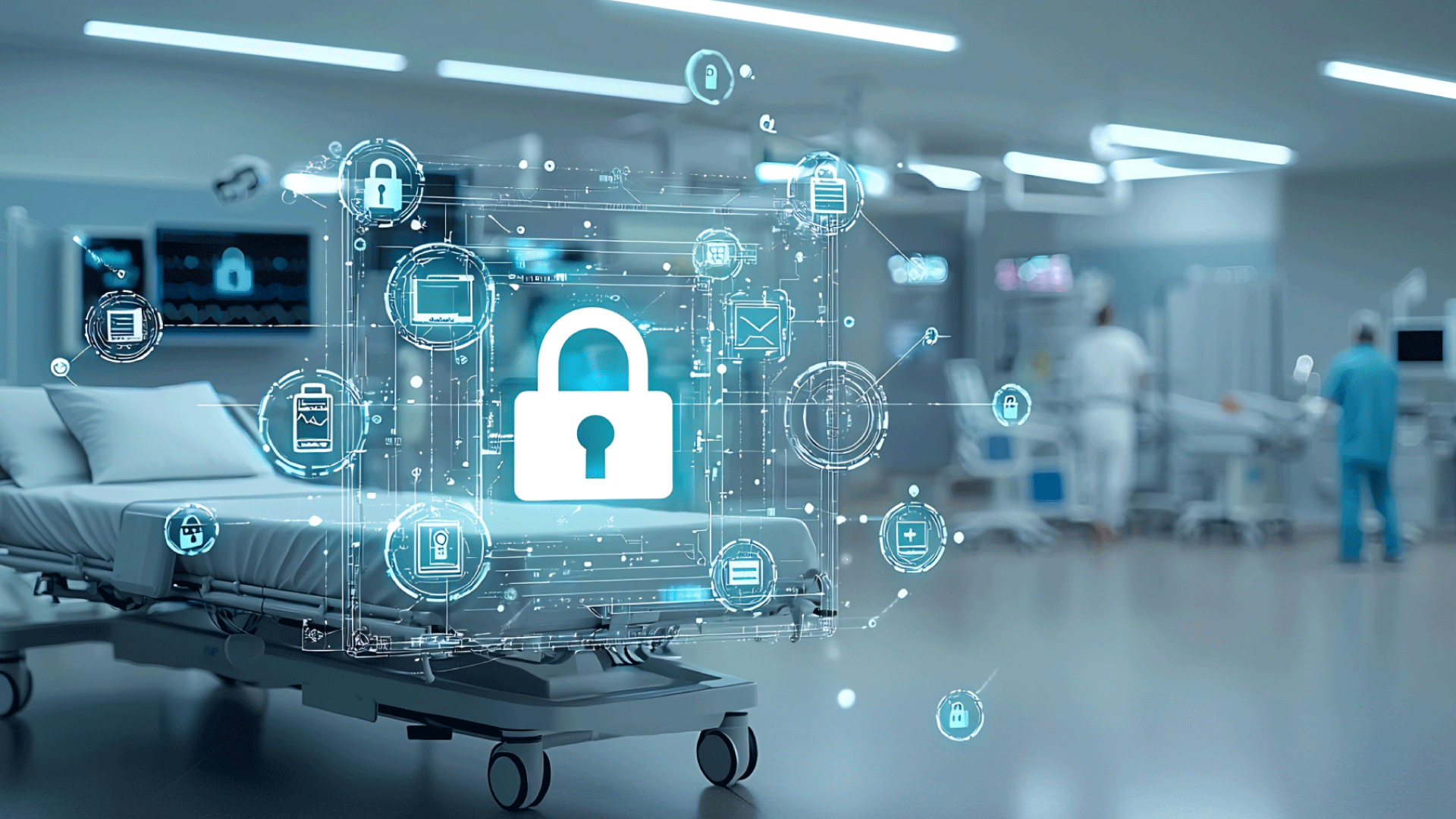
There is an increase in cyber threats that are more powerful and spread faster targeting the healthcare systems. For the proper functioning of the hospitals, there is a need for EHR platforms, imaging tools as well as other connected equipment which should be kept operating 24/7. Such kind of risks cannot be managed using the traditional VPNs and disparate tools. Secure Workspace is emerging as the next best thing for cybersecurity in healthcare; it secures each session, every user, and all workflows within a controlled environment. Most healthcare providers are adopting new security models such as those provided by the Mindcore Technologies team.
With secure workspace, hospitals can control remote access, third-party vendors, and clinical workflows in a safer manner. It achieves this through zero-trust checks, session isolation, and encrypted paths. These features enable hospitals to mitigate risks, ensure adherence to laws, regulations while at the same time keeping patient treatment processes at optimal speeds.
The Shift From Traditional VPNs to Secure Workspace Models
Why VPN-based security no longer works for hospitals
VPN tunnels are still heavily depended on in numerous hospitals. With these tunnels, all data is transmitted through a single route. If one device is hacked, then the whole network becomes vulnerable. According to the Department of Health and Human Services, over 90% of ransomware attacks on healthcare are as a result of first stealing remote access credentials. In addition, VPNs do not have effective monitoring features; hence, creating blind spots for attacks.
What makes secure workspace different
A secure workspace does not rely on one tunnel. Every session is isolated. Identity checks happen at every login. Encryption covers all activity. This gives hospitals stronger control and reduces exposure during attacks.
How Secure Workspace Strengthens HIPAA, HITRUST, and NIST Compliance
Continuous monitoring and audit-ready logs
Every session is recorded by Secure Workspace. It follows up on the entry and keeps an eye on what is happening, then generates complete audit trails. These records are employed by compliance teams to satisfy HIPAA and HITRUST regulations, particularly in hospitals that enhance their day-to-day activities with healthcare cybersecurity solutions. The configuration decreases manual labor and speeds up audit preparation.
Identity-based access and reduced credential abuse
The following sentence clarifies that vendors and contractors must be careful. The secure workspace has time-limited access, single-use permissions, as well as verified identity checks. As a result, this reduces the chances of shared passwords and also enables hospitals to comply with robust access control policies.
Meeting NIST 2.0 recommendations
The standards under NIST 2. 0 are encouraged by secure workspace through micro-segmentation, continuous monitoring and role-based controls being followed. It isolates sessions and applies consistent rules across all departments.
Protecting Clinical Systems Using a Zero-Trust Secure Workspace
Why zero trust is essential for hospitals in 2026
The zero-trust model works on the premise that there are no secure devices or users. It authenticates identity whenever an entity accesses the system. As a result, this approach is beneficial in preventing internal errors, credential compromise as well as attacks linked with IoT within the hospital setting. In addition, it reduces the probability of side-to-side traffic within the network, a major worry in cybersecurity threats towards healthcare organizations come 2026 where they are increasingly going for clinical systems.
Securing remote clinicians and multi-site workflows
A lot of clinicians operate away from the hospital. A few of them interpret images at their houses or in different campuses. The Secure Workspace is for safeguarding telehealth sessions, remote radiology, and shared clinical data in all sites. As a result, this enables hospitals to cater for versatile teams with no extra risk.
How Secure Workspace Protects Healthcare Data Across Every Workflow
EHR access and patient data protection
Patient records in hospitals should have high levels of security. The encryption of every session and isolation of EHR access by Secure Workspace ensures that no attacker can view or tamper with the confidential information being transferred.
Protecting Medical IoT data flow
Most medical IoT devices are incompatible with emerging security tools due to lack of update support. The traffic is secured by the Secure Workspace. It keeps device communication safe even when the device itself is outdated, which is a growing concern as hospitals explore NSA-level security for healthcare to strengthen their overall protection.
Third-party vendors and contractor access
Equipment repair, cloud tools, billing support, and imaging systems are taken care of by vendors. Their access is limited and every session is monitored by the Secure Workspace. As a result, there is less likelihood of misuse or forgetting passwords.
The Role of AI in Secure Workspace Platforms
AI-driven threat detection
AI tools observe activity across every session inside the secure workspace. Through this, they are able to learn what is normal and identify any abnormal actions that may be a threat. An immediate alert is sent to the team by the AI if it notices anything out of the ordinary. The early warning can prevent emerging hazards from becoming major issues.
In addition, AI monitors the behavior of devices and their movements within the network. It tries to identify any indicators that may suggest an attempted forced entry or stealthy movement within the system. The solutions employed by teams in Mindcore Technologies are based on this approach; they use AI to identify non-obvious risks before they affect clinical systems. As such, hospitals have an enhanced layer of security which does not wait for the complete attack but rather responds quickly to limit and control damages caused by such attacks.
Automated policy enforcement
AI can update rules without waiting for a manual change. It adjusts settings in real time and ensures that each user takes the appropriate action. This is important in ensuring that the hospitals are safe even when it is not possible for the employees to go through all the policies due to their busyness. In addition, it reduces errors resulting from manual updates.
By enforcing itself, the hospital can maintain a constant level of security. It prevents noncompliant behavior and enforces proper controls in every sector. Teams take less time adjusting settings and concentrate on clinical duties. As a result, it provides better environment for all.
Real Healthcare Use Cases That Show the Value of Secure Workspace
Secure Workspace helps hospitals protect high-risk workflows without slowing down daily operations. These real examples show how it works in modern environments:
- Telehealth sessions stay encrypted and safe: Patients and clinicians can meet securely without exposing sensitive information.
- Remote radiologists can read images from any location: They access scans through isolated sessions that protect clinical data at all times.
- Vendors only access what they need and lose access when the job is done: Time-limited permissions stop long-term credential misuse and reduce hidden risks.
- Multi-site hospitals share imaging files, lab results, and records securely: Encrypted paths prevent attackers from intercepting data that moves between campuses.
- Emergency teams keep working during outages or incidents: Sessions remain isolated, so disruptions do not stop critical workflows.
These examples show how Secure Workspace supports safe and steady hospital operations even in high-risk situations.
Secure Workspace vs. Traditional Tools (VPN, VDI, SD-WAN)
Limitations of legacy remote access tools
Even today, a good number of hospitals rely on VPNs and other outdated means of controlling remote access. With these systems, there is only one connection point for all users; this is very risky. In case the tunnel is hacked, the intruder will be able to advance his way into the network without attracting any attention. It’s also difficult to keep track of each connection made through a VPN because they take place in a common pathway.
The truth is that even the legacy tools are not immune from the emerging threats. They lack capability to block sideways movement and also cannot separate sessions. As such, one insecure equipment may affect other parts of the system. Certain applications are incompatible with new hardware that lacks capacity for high level encryptions. These weaknesses pose challenges to safeguarding of confidential clinical workflows in hospitals during cyber-attacks.
Why secure workspace wins in healthcare environments
Secure Workspace works differently because every session is isolated. It checks identity at every login and watches activity in real time. This gives hospitals stronger visibility and reduces the chance of attackers moving between systems. It also protects devices that cannot run advanced security tools by securing the traffic instead of the endpoint, which supports the same goals seen in unified healthcare IT environments.
This model supports medical IoT devices, remote clinicians, and busy clinical teams. It keeps EHR access safe and protects imaging tools and lab systems. Hospitals gain a consistent layer of security across every workflow. This helps them reduce downtime and maintain safer operations without adding extra tools or complexity.
How Hospitals Can Adopt a Secure Workspace Step-by-Step
Phase 1 — Assess workflows and endpoints
To start with, hospitals make a record of all the equipment, suppliers and activities that are linked to their network. Such may involve imaging tools, EHR systems, remote clinics, and medical IoT devices. By doing so they can identify areas that deal with sensitive information as well as those that use obsolete instruments.
In addition, at this stage, teams determine the usage of individual systems. They identify users who connect from remote locations, establish shared devices and determine the most vulnerable points. This is important in helping the hospital know where there should be more secure workspace protection.
Phase 2 — Enable secure workspace for high-risk workflows
Once the risky areas are identified, hospitals give priority to securing the most important workflows. Typically, these may be comprised of EHR access, teleradiology sessions, vendor maintenance workflows, and remote clinicians who work off-site. The early protection of such areas minimizes the risks of both downtime as well as data breaches.
The addition of isolated sessions, stronger Healthcare data encryption, and identity checks by Secure Workspace ensures protection of confidential information while maintaining a fast pace environment for clinicians.
Phase 3 — Expand across teams and vendors
Once the core systems have been secured, hospitals can also extend Secure Workspace to other units. These may comprise of administration, billing, laboratories and specialized outpatients. It should be implemented in a manner that does not make the different teams feel overwhelmed.
In addition, hospitals are able to accommodate vendors, contractors as well as partners. Their access will be time-bound and limited to specific requirements thus minimizing external threats.
Phase 4 — Integrate with zero trust and AI monitoring
Every login is an identity verification opportunity under the enhanced zero trust security. It examines the state of the device as well as the characteristics of the session. With zero trust in place within Secure Workspace, hackers cannot pivot between different hosts.
A supplementary measure is AI monitoring, which observes traffic flow and identifies any emerging issues. In combination, these approaches provide a comprehensive cybersecurity solution that defends hospitals against contemporary menaces.
Final Thoughts: Why Secure Workspace Is the Future of Healthcare Cybersecurity
Secure Workspace gives hospitals a stronger way to handle modern risks. It protects every session and keeps data safe even when teams work across different locations. It also helps hospitals stay compliant with rules that grow more strict each year. With one unified model, clinical and administrative teams can work smoothly without worrying about hidden threats.
Hospitals that want to prepare for tougher cybersecurity challenges in 2026 can explore secure workspace options early. A simple review of workflows shows where protection is needed most. Leaders who want guidance can start with a free consultation with Mindcore Technologies to learn which secure workspace plan fits their long-term goals.
Frequently Asked Questions About Secure Workspace in Healthcare
What makes a secure workspace better than a traditional VPN for hospitals?
The fact that a conventional VPN uses a single tunnel for all users makes it a weak point. If this tunnel is hacked, unauthorized persons can gain deeper access to the network. On the other hand, with a secure workspace, each session is contained separately, there are identity checks in place and encryption of every communication. As a result, there will be no lateral movements and hospitals will be provided with better protection in relation to EHR systems, imaging tools, and remote workflows.
How does a secure workspace support HIPAA and HITRUST compliance?
Secure Workspace creates full audit logs for every session. It tracks user identity, device activity, and access patterns. Secure Workspace creates full audit logs for every session. It tracks user identity, device activity, and access patterns. These logs help hospitals meet HIPAA transmission rules and HITRUST access control requirements. It also enforces consistent security policies across all departments, which reduces manual work and shortens audit preparation time.
Can secure workspace tools protect older medical IoT devices?
Yes. A number of IoT devices are not able to support high-level encryption or security updates. However, with a secure workspace, the traffic is protected. As such, it ensures that communication among devices remains secure even if they employ outdated firmware and such tools as pumps, vital sign monitors, or imaging sensors.
How does secure workspace improve security for telehealth and remote clinicians?
The encryption and isolation of telehealth sessions prevent unauthorized persons from accessing or intercepting patient data. By using secure sessions, offsite health providers get into electronic health records, radiology services, as well as pathology instruments. Therefore, it is possible for hospitals to provide support for adaptable care teams in various places without compromising confidential information.
Is it difficult for hospitals to switch to a secure workspace model?
No. Hospitals adopt Secure Workspace in phases. They start by assessing high-risk workflows, then protect EHR access, imaging tools, vendor sessions, and remote users. After core systems are secure, they expand to other teams and integrate zero trust and AI monitoring. This step-by-step approach makes the transition safe and manageable.

